The Monday After: Ohio veterans' kids learn about WWII service while prepping MAPS display
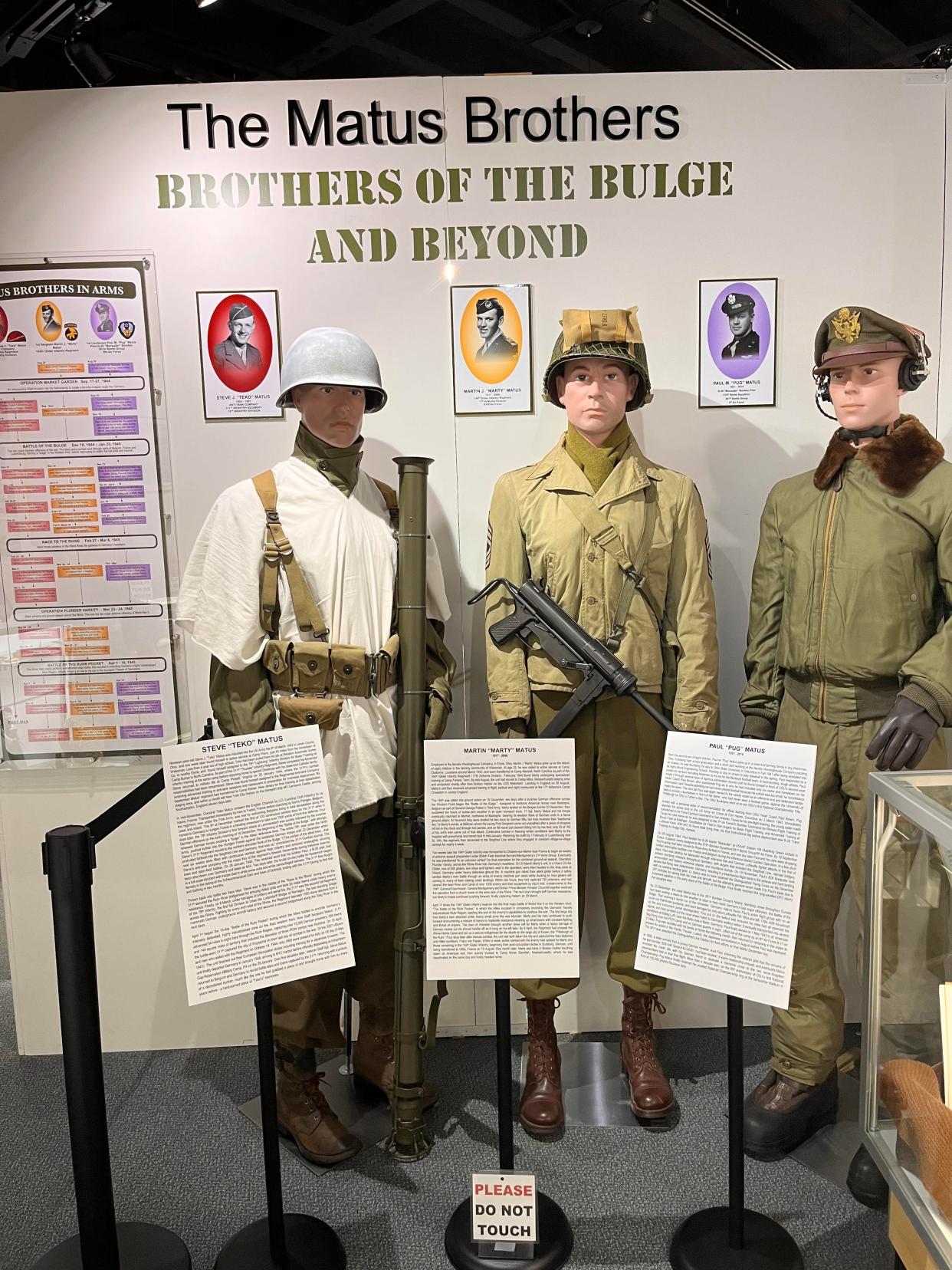
- Oops!Something went wrong.Please try again later.
A new exhibit at MAPS Air Museum in Green – "The Matus Brothers: Brothers of the Bulge and Beyond" – tells a dramatic story of the World War II service and sacrifices of three Ohio siblings that is worthy of the big screen.
More than one person who has seen it has commented on the power of the exhibit, in which artifacts and information are in a display in the museum's Gallery of Heroes. "This is a movie, where you don't have to make anything up," said one individual.
Steve J. "Teko" Matus, Martin J. "Marty" Matus, and Paul M. "Pug" Matus grew up in Wakeman, a small community in northern Ohio lying little more than an hour from the museum in which they now are remembered. Steve Matus was a staff sargeant in an anti-tank company, promotional material from MAPS notes. Martin Matus was a first sergeant in the infantry of a glider regiment. Paul Matus was a first lieutenant and B-26 "Marauder" bomber pilot in a bomb group.
More: The Monday After: Dance studio owner to keep moving after retirement
Though they served in different branches of the Army, "each was involved in the Battle of the Bulge and other battles from 1944 to 1945."
"We've got a color-coded timeline that shows where the three brothers were and what they did in the war," said Scott Denniss, the museum's curator. "The whole display grabs your attention and makes you want to learn."
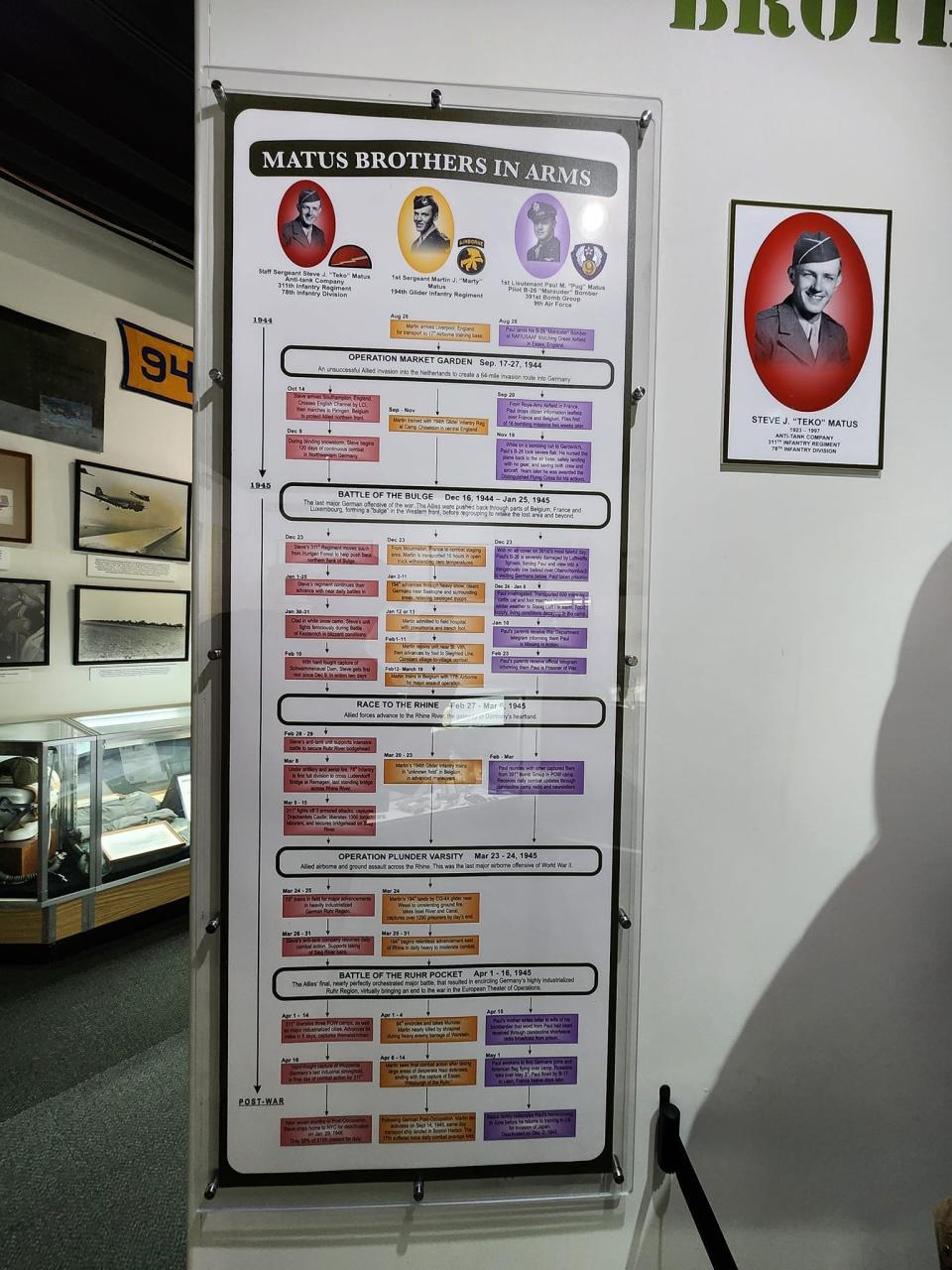
Much research and preparation
To provide that dramatic history lesson, "The Matus Brothers" exhibition took months to research and prepare.
"Originally I said it was going to be awhile before we could get to it," said the curator, who noted that Debbie Davidson from Lorain County, the daughter of Paul Matus, initially brought to the museum information and artifacts about her dad's service. "He was a B-26 pilot and we are a military aviation museum, so it was a no brainer. But, at first I envisioned it as part of a display case."
Then Davidson's cousins began discovering vestiges from their fathers' military service, Denniss recalled, and the exhibit grew in scope.
"When we found out about the other brothers, it took on a new life, and it turned out to be a permanent exhibit with two walls and a big display case. It's one of our best displays."
A team of volunteer researchers in the library at MAPS was eager for a project, said Denniss, so they went to work on "The Matus Brothers" display. Those volunteers and others on the project team – including Debbie Bussinger, Peg Deibel and Pete and Maryann Nofel – researched the brothers, studied the battles of the war in which they fought, and designed a way to interestingly tell that evolving story.
"We kept finding things," said Denniss. "The more we found, the bigger it got."
More: The Monday After: O'Jays hit the top of music charts
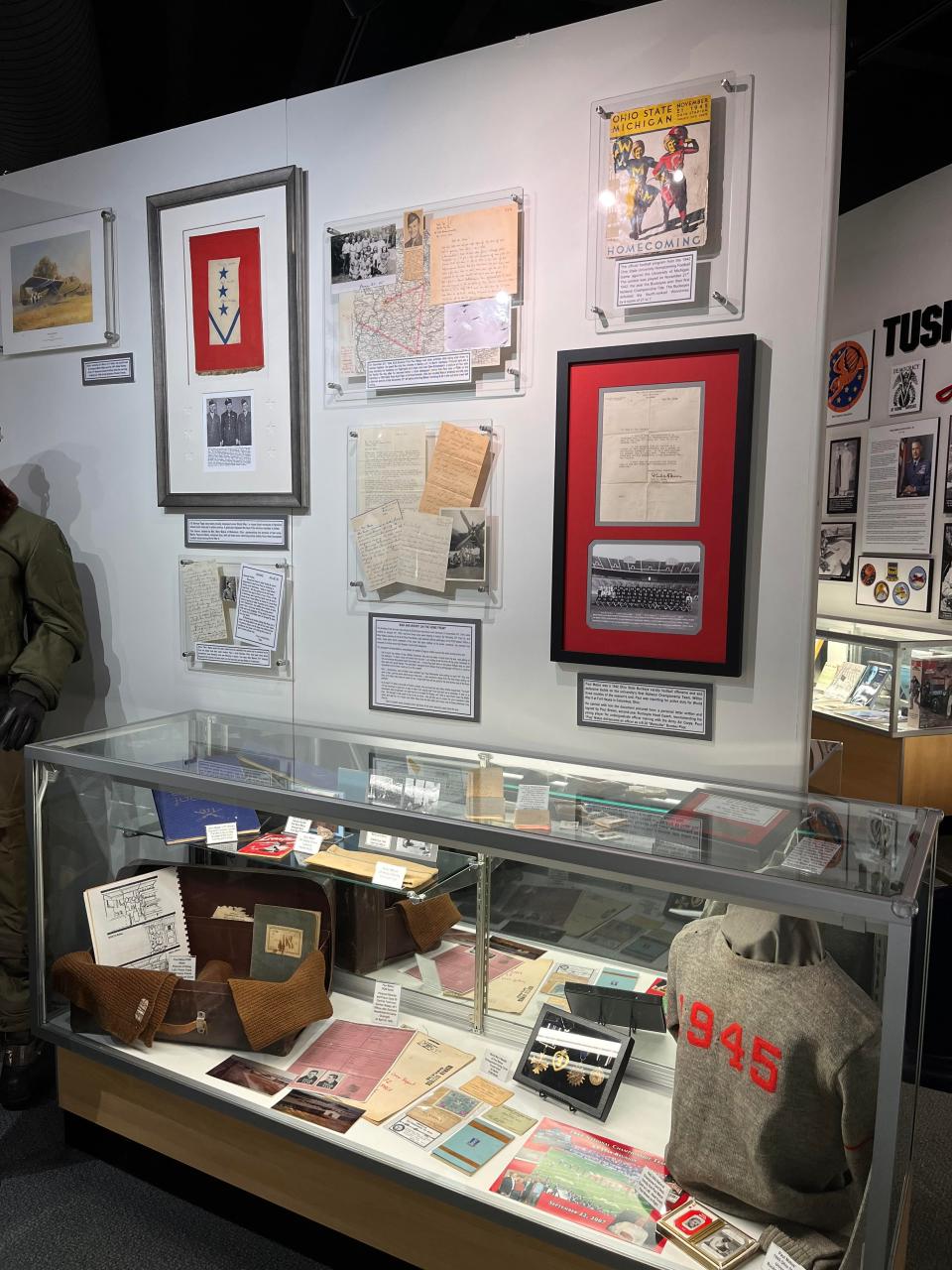
Sons and daughters discover nuggets
The brothers rarely spoke about their time in the war, so it was left for their offspring to discover artifacts, collect letters of communication, and piece together details of their fathers' military service as they sorted through boxes and trunks of memorabilia following the passing of their parents.
"My dad was a saver," explained Davidson, who went through what her father collected during his life following her parents' deaths. "He saved every document from the war department and every letter he got."
From a trunk, she pulled documentation that her father, a strong athlete, had played football at Ohio State University, despite never having played the sport for his high school. Given a chance to compete by head coach Paul Brown – the legendary former Massillon coach – Paul Matus was a member of OSU's first national championship team in 1942.
"Paul Brown invited him back for the 1943 season, but dad got called to duty," said Davidson.
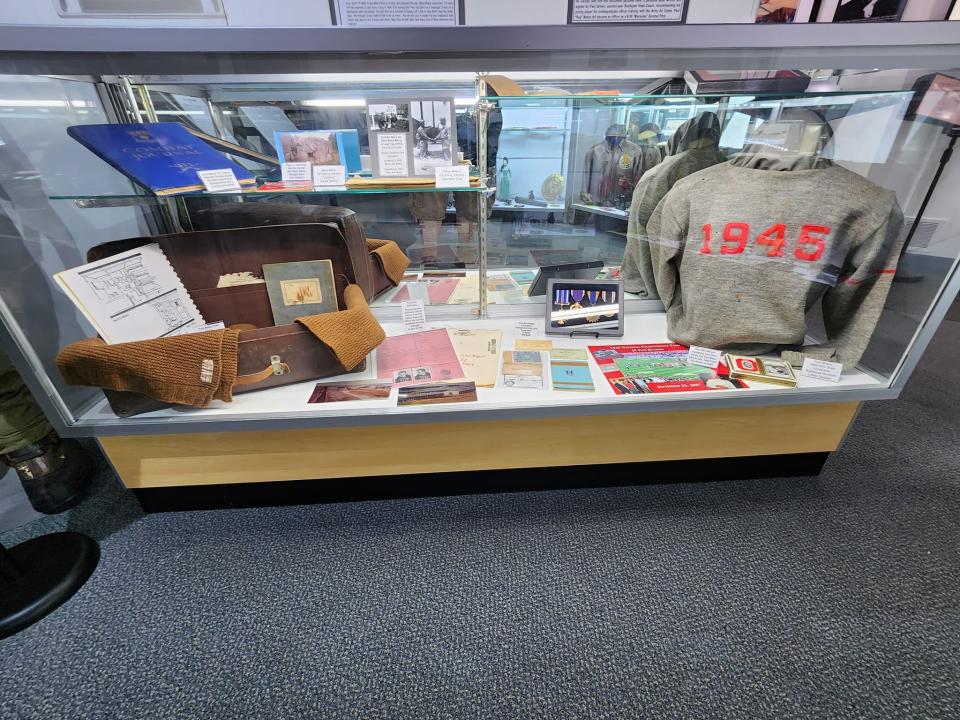
The exhibit also displays Paul Matus' letterman sweater and a letter of recommendation Brown wrote for his player to the war department.
Davidson also found communication between her father and a German man who had found his plane's crash site, discovered the bomber's serial number, and tracked down Matus to speak to him about the incident. The man wrote a historical novel about the crash.
And during the sorting she uncovered a letter that her uncle Marty Matus had written to the siblings' younger brother, Eddie Matus, detailing his life following his induction.
"It describes every detail of his journey after he left the U.S.," said Davidson.
Cousins contribute artifacts
Marty's son, Larry Matus of Elyria, also contributed items, including the collection of framed medals that his father had earned.
"My other cousins got the ball rolling," said Matus. "I came in after they had contacted MAPS. I thought they did an outstanding job researching and developing this project. Essentially, they tracked the three brothers and identified their locations at different points in the war. The timeline and the letter show that there were times when they were only 30 or so miles from each other."
Two of Steve Matus' children, daughter Kathy Donohue and son Thomas Matus, called the development of the exhibition at MAPS "overwhelming" and "emotional."
Donohue, who following her mother's death two years ago went through much material about her father that had been saved through the years, said that when she viewed the exhibit it "was like a history lesson and my dad was the star." In the display case were artifacts with which she was familiar, such as her father's prayer book and the pictures of his younger siblings that he carried with him during the war, as well as a service flag that mothers with sons overseas displayed at their homes.
But, also coming to light were unfamiliar artifacts and new tidbits of information.
"There were things I didn't know and the story was about a man I didn't know," she said. "He and his brothers had all these experiences and he did not talk at all about it. It was surreal."
Similarily, Tom Matus had seen some of the artifacts, but never read such communication as his father's letters home until he viewed the exhibit at MAPS.
"All this has been very emotional from the start," he said. "The top shelf of the display case is filled with things of my dad. It was so unbelievable. I had no idea all about what my dad did."
Exhibit inspiring and educational
The dedication of the exhibit was held on Memorial Day. About 100 Matus family members attended the private exhibit opening.
"I thought the MAPS organization did an outstanding job developing this project," said Larry Matus. "We certainly are a very close family, and this is another example of why we are close, the fact that these types of things are meaningful to us."
Now the Gallery of Heroes exhibition is open to the public. Visitors can view it during regular museum hours, 9 a.m. to 4:30 p.m. Tuesday through Saturday and 11:30 a.m. to 4 p.m. Sunday. Admission to the museum is $15 for adults, $13 for seniors 60 and older, $8 for children 6 to 12 and free for children younger than 6.
Denniss hopes that visitors – especially younger ones – walk away from the exhibit with a better understanding of World War II and of war in general.
"We're a teaching museum," explained Dennis. "We get a lot of school tours, from grade school through high school. So, we try to put a face on history. Hopefully, the kids will get a better idea of what their grandparents went through. I want every kid who comes through here seeing himself and his family and has a connection.
"It's important that people understand where they came from and the sacrifices that were made by those who came before them. War is not pretty. It's not Hollywood."
Reach Gary at gary.brown.rep@gmail.com. On Twitter: @gbrownREP.
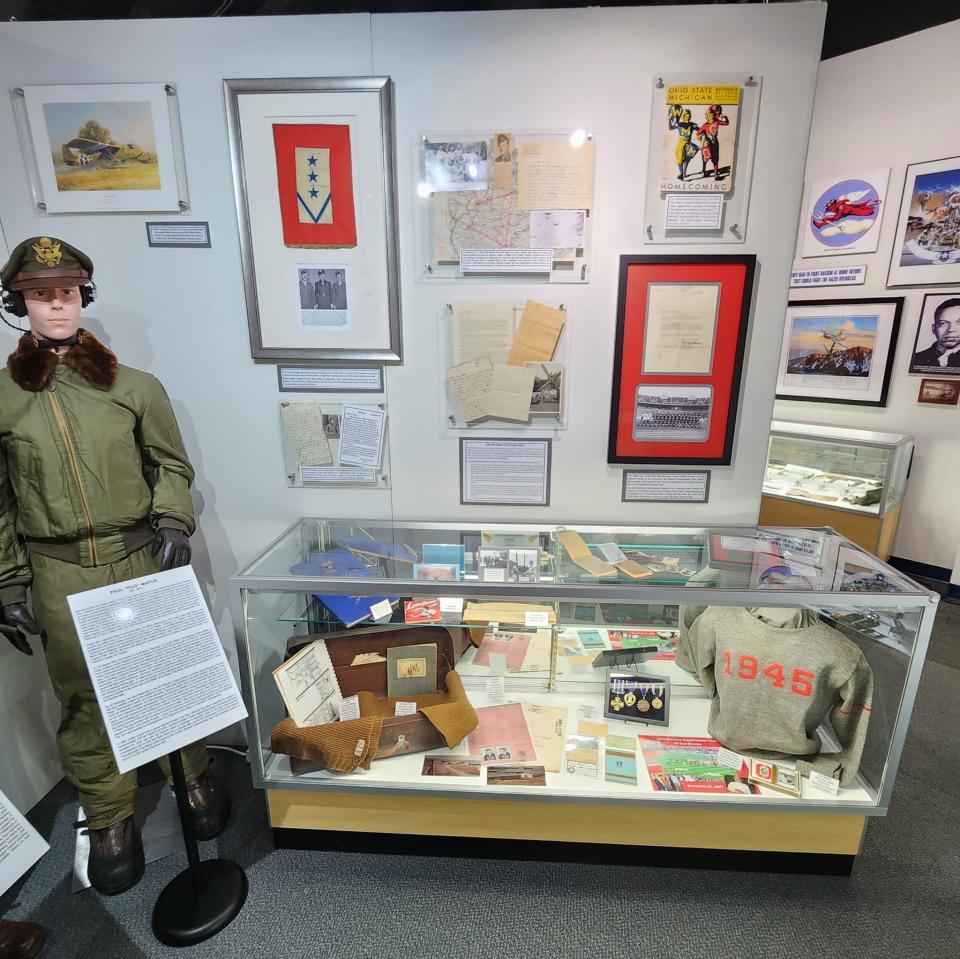
This article originally appeared on The Repository: Ohio veterans' kids learn about WWII service while prepping MAPS display

